|
|
Post by noooby on May 12, 2016 3:31:38 GMT 12
suthg, just one correction to your above post. 609 wasn't an NZ Sqn, it was 609 (West Riding) Sqn, Royal Auxiliary Air Force.
They lost a LOT of their original pilots in the Battle of Britain and that is when a lot of Colonials were posted in.
Scrooge, PM coming your way. I have lots of original DTS's and BS specs, perhaps we can compare notes! I also have access to the UK MOD Defence Standards portal. Many DTD's are there, but there are large gaps in what they have.
Cheers
|
|
|
|
Post by suthg on May 12, 2016 7:44:49 GMT 12
OK thanks for that Noooby, yeah, they were quite mixed, I remember now - Australians, Poms, Argentinians and others too. 486 SQ may have been the same too?
|
|
|
|
Post by davidd on May 12, 2016 11:56:32 GMT 12
I think 486 Sqdn (pilots only) was practically 100% NZers, including a few in the RAF. One Canadian was accidentally posted in at some time in 1943 I think it was, so he was almost immediately posted out to keep 486 Sqdn "pure". Of course the ground staff (which was not part of the sqdn, being a separate but dependent Servicing Echelon) was almost 100% RAF.
Dave D
|
|
|
|
Post by Dave Homewood on May 12, 2016 22:04:22 GMT 12
Was that the same with No. 485 (NZ) Squadron? Thinking about it pretty much all the pilots I can think of were kiwis with them too.
|
|
|
|
Post by angelsonefive on May 13, 2016 7:09:55 GMT 12
OK thanks for that Noooby, yeah, they were quite mixed, I remember now - Australians, Poms, Argentinians and others too. 486 SQ may have been the same too? Belgium was well represented in 609 Squadron. After Dunkirk a number of Belgian pilots made their way to England, subsequently flying fighters in the Battle of Britain. There were not enough of them at that stage to form a Belgian squadron, so it was decided early in 1941 to concentrate the Belgians in one squadron and 609 was elected. Many became prominent in Fighter Command. Remi Van Lierd, the Ortman brothers Victor and Christian, Francois de Spirlet, Rodolph de Grunne, George "Gin" Seghers, Jean Offenberg, Michael Donnet, Raymond Lallemant ( became an OC 609 Sqdn ), Charles Demoulin and others flew in 609 Sqdn at some stage. Link here : www.belgian-wings.be/Webpages/Navigator/Belgian_Aviation_History/ww_ii/609_squadron.htm |
|
|
|
Post by nuuumannn on May 13, 2016 13:29:03 GMT 12
Good luck to you Graeme; keep it up - am watching with interest. Although to be pedantic, during the war it was just "Auxiliary Air Force"; the Royal charter wasn't given to the auxiliary squadrons until after the war.  Also of note, its CO at one stage was the late Great Roland Beamont, who provided much support for keeping the Tiffie in service after the issues that were afflicting it and it not being as effective in its intended role as originally believed. |
|
|
|
Post by noooby on May 15, 2016 2:29:09 GMT 12
Bea Beaumont and a number of other 609 Sqn pilots have signed this aircraft, LH side, just aft of the cockpit. I'll see if I can dig up the photo.
|
|
|
|
Post by davidd on May 15, 2016 10:43:39 GMT 12
Dave H,
Yes, 485 Squadron was run pretty much in the same manner as 486, with almost 100% NZ pilots (including some in RAF), and almost 100% RAF groundstaff (plus a smattering of RNZAF wireless and armament tradesmen, also possibly a few instrument tradesmen). However the other Article XV squadrons (and 75 Sqdn) had no such restrictions, although they did tend to have a fairly strong Dominion representation in the aircrew department. Reason for this was quite obvious in that Air Ministry were not prepared to hold up crew training at OTUs by having to make up all-Dominion crews for individual squadrons, when they made little no attempt to stream nationalities in this way, and even had they troubled to do this, most Dominion crews for bomber and coastal squadrons would have had to be posted to non-Article XV squadrons anyway, as the RNZAF was restricted to just the seven units originally agreed in December 1940 (485 to 490, and 75). The numbers of NZ aircrew coming forward by late 1941 were sufficient to have formed quite a few new squadrons every year in various home and overseas commands. I believe that the RCAF and RAAF had additional blocks of Article XV squadron numbers allocated to meet demand, but for some reason the NZ allocation was never augmented in this way.
Although a slight exaggeration, in about 1944 in NZ, I think it was the Minister of Defence (on Air Department advice) boasted that at this stage of the war the RNZAF was in theory capable of mounting a thousand-bomber raid on Germany single handed - all aircrew, any escorting fighters (Mosquitos of course, and all groundcrew,operations and meteorological staff, etc. However this was not even a remote possibility, as most of the RNZAF's ground staff were actually serving in NZ and the South Pacific, or in other war theatres, and much the same would have applied to aircrew, but it was an easily visualized demonstration of the size and breadth of even the tiny RNZAF that people in NZ could mentally grasp, never mind the impossible logistics and other heavy demands from other theatres and national interests. Must have made a few people sit up and take notice, and perhaps even a small swell of national pride? No doubt most people in NZ at this time thought that our airmen serving with the RAF were actually members of the RAF, and they were almost right on that, as the NZ Govt had very little control of those men, who were individually attached to the RAF for all things including command, operational deployment, tours of duty, postings, rations, accommodation, medical care, etc, and in fact even paid them. The NZ Govt was only obligated to top up their pay to equal RNZAF pay rates "at home". Compare this with the way the 2nd NZEF was set up, with the entire body of this force organized from NZ (although within strict adherence to Imperial defence policy and guidelines, etc.) and remained within this force throughout their overseas service, under all-NZ commanders.
David D
|
|
|
|
Post by Dave Homewood on May 16, 2016 16:28:11 GMT 12
Interesting stuff there David. I do know in 1943 a decree came from the No. 3 Group Commander that No. 75 (NZ) Squadron should have only New Zealanders as their CO and Flight Commanders, and I think a few other positions like Navigation Leader, Gunnery Leader, etc, within the squadron. As a result the Flight Commander Geoff Rothwell (a Brit who now lives in Auckland) was forced to depart the squadron.
I wonder if the other squadrons, No's 487, 488, 489 and 490, also had a policy implemented for kiwi only leaders?
|
|
|
|
Post by suthg on May 16, 2016 21:08:50 GMT 12
|
|
|
|
Post by angelsonefive on May 17, 2016 5:57:26 GMT 12
Good to see the signature of the great film production and set designer ( several James Bond films and Dr Strangelove ) Sir Kenneth Adam OBE ( 5/2/21 to 10/3/16 ) on JP843.
There is an interesting story about Ken Adam's flying training in the USA. He was about to graduate from his SFTS Course at a British Flying School in the States when he was suddenly told to pack his bags, as he was being posted that day to a Hurricane OTU in Canada.
Young Sgt Adam was most disappointed to miss his Wings Parade and the graduation parties etc, but he had no choice.
Years later, on a visit to the USA, Ken Adam found out the reason for his abrupt departure from the country. His German parents had immigrated to England some years before WW II and Ken had been born in Berlin. It seems that the local FBI had noticed that one of the British cadets was born in Germany and wanted to arrest him as a spy ! The RAF authorities decided it was best not to argue the toss and removed Sgt Adam to Canada PDQ.
Kenneth Adam was one of just three RAF pilots of German birth. His younger brother, Denis, was another and also became a Typhoon pilot.
|
|
|
|
Post by noooby on May 17, 2016 10:28:02 GMT 12
Thanks Graeme! I got caught up i propellers and stuff  |
|
|
|
Post by Deleted on May 18, 2016 10:39:08 GMT 12
I saw Ken Adam's name and got excited! (Big Bond fan, loved them all as a kid and watched endlessly). What an amazing roll of honour.
|
|
|
|
Post by errolmartyn on May 18, 2016 19:19:27 GMT 12
The roll of honour of the 50 New Zealanders who died whilst flying Typhoons.
Service Number, Rank, Christian Names, Surname, Honours & Awards, Air Force, Unit, Date (yymmdd)
NZ412643 Flight Sergeant David ARCHIBALD, RNZAF, 247 Sqn, RAF - 430403
NZ416441 Flying Officer John Nesbitt BEATTIE, RNZAF, 83 GSU, RAF - 450209
NZ413531 Flight Sergeant David BENNETT, RNZAF, 486 Sqn, RNZAF - 430916
NZ404886 Flying Officer Andrew Alexander BROWN, RNZAF, 486 Sqn, RNZAF - 430516
NZ421671 Warrant Officer Douglas Leopold BURKE, RNZAF, 247 Sqn, RAF - 440715
NZ421674 Warrant Officer Ivan William CAIN, RNZAF, 175 Sqn, RAF - 441006
NZ411858 Flight Sergeant Robert Richard CAMPBELL, RNZAF, 247 Sqn, RAF - 430415
NZ412787 Flight Sergeant David Buchanan CLARK, RNZAF, 486 Sqn, RNZAF - 421016
NZ404336 Pilot Officer Kenneth CLIFT, RNZAF, 245 Sqn, RAF - 430619
NZ422049 Flight Sergeant Thomas Sylvester EDWARDS, RNZAF, 182 Sqn, RAF - 440929
NZ421690 Flying Officer Richard Akehurst EGLEY, DFC, RNZAF, 137 Sqn, RAF - 450324
NZ411874 Pilot Officer Roderick Herbert FITZGIBBON, RNZAF, 486 Sqn, RNZAF - 430906
NZ413061 Flying Officer Douglas Ross HALL, RNZAF, 3 Sqn, RAF - 430518
NZ421712 Pilot Officer Robert Blakeman HEMMINGS, mid, RNZAF, 247 Sqn, RAF - 440808
NZ422287 Pilot Officer James Alastair HOWARD, RNZAF, 182 Sqn, RAF - 450223
NZ412694 Flying Officer Ian Cameron HUTCHESON, RNZAF, 137 Sqn, RAF - 440827
NZ42408 Warrant Officer Leonard Horace JOHNSON, RNZAF, 3 TEU, RAF - 440705
NZ413424 Sergeant James Struthers JONES, RNZAF, 56 Sqn, RAF - 420818
NZ413086 Pilot Officer Murray Osborne JORGENSEN, RNZAF, 486 Sqn, RNZAF - 430916
NZ413174 Flight Lieutenant Paul LANGSTON, RNZAF, 247 Sqn, RAF - 441024
NZ421733 Pilot Officer Albert Henry LETHABY, DFC, RNZAF, 182 Sqn, RAF - 450811
NZ422295 Pilot Officer Keith LEWIS, RNZAF, 182 Sqn, RAF - 441028
NZ413862 Flying Officer Alan Trevor LITTLE, RNZAF, 3 Sqn, RAF - 430701
NZ413944 Pilot Officer Ronald William LORNIE, RNZAF, 247 Sqn, RAF - 430708
NZ416864 Flight Lieutenant John Davis LUNN, RNZAF, 257 Sqn, RAF - 450124
NZ413448 Flying Officer Neville Ronald MAXWELL, RNZAF, 181 Sqn, RAF - 430730
NZ413948 Flight Sergeant Neil James McCOOK, RNZAF, 3 Sqn, RAF - 440208
NZ413869 Warrant Officer Ronald Gregor McGREGOR, RNZAF, 247 Sqn, RAF - 441231
NZ429666 Flying Officer Mate Alexander MILICH, DFC, RNZAF, 198 Sqn, RAF - 441208
NZ40422 Flight Lieutenant Eric Kingsley NECKLEN, RNZAF, 197 Sqn, RAF - 441121
NZ417095 Flight Lieutenant Oscar Henry ODEN, RNZAF, 198 Sqn, RAF - 441212
NZ40427 Pilot Officer Jesse PEARSE, RNZAF, 486 Sqn, RNZAF - 421025
NZ404937 Flight Sergeant Russell William Strode PENNY, RNZAF, 486 Sqn, RNZAF - 421218
NZ404404 Flight Lieutenant Desmond Palmer PERRIN, DFC, RNZAF, 198 Sqn, RAF - 440910
NZ404467 Flying Officer Raymond Albert PETERS, DFM, RNZAF, 486 Sqn, RNZAF - 431230
40134 Squadron Leader Thomas Henry Vincent PHELOUNG, RAF, 56 Sqn, RAF - 430620
NZ402893 Pilot Officer Raymond Ignatius PHILLIPS, RNZAF, 486 Sqn, RNZAF - 421002
NZ412265 Flying Officer Gibson PHILP, RNZAF, 486 Sqn, RNZAF - 440114
NZ413889 Warrant Officer John Robert POWELL, RNZAF, 257 Sqn, RAF - 441008
NZ41937 Pilot Officer Norman Edward PRESTON, RNZAF, 486 Sqn, RNZAF - 430916
NZ424518 Pilot Officer Peter March PRICE, RNZAF, 609 Sqn, RAF - 440727
NZ404943 Flying Officer Gerald Edmond RAWSON, RNZAF, 183 Sqn, RAF - 431024
NZ424264 Flying Officer William Desmond ROSS, RNZAF, 184 Sqn, RAF - 450221
NZ421785 Pilot Officer James Kingston STELLIN, Croix de Guerre (with palms) (Fr), RNZAF, 609 Sqn, RAF - 440819
NZ412001 Flying Officer George Raymond TRAFFORD, RNZAF, 164 Sqn, RAF - 440825
NZ412288 Flight Sergeant Alfred Gullery TURNER, RNZAF, 486 Sqn, RNZAF - 440405
NZ412008 Pilot Officer Wallis Berkley TYERMAN , RNZAF, 486 Sqn, RNZAF - 431110
NZ412294 Flying Officer Leslie Vincent WEIR, RNZAF, 486 Sqn, RNZAF - 421031
NZ414721 Warrant Officer Harry Keith WILLIAMS, RNZAF, 486 Sqn, RNZAF - 440314
NZ411999 Flying Officer Hector Stevenson YOUNG, RNZAF, 245 Sqn, RAF - 450221
Errol
|
|
|
|
Post by Dave Homewood on May 18, 2016 20:00:23 GMT 12
I know a living No. 486 Squadron pilot who lives not far from here who was shot down in a Typhoon over France.
|
|
|
|
Post by suthg on Jul 16, 2016 12:00:33 GMT 12
It is now a further 2 months since I last posted and quite a lot has happened since on the JP843 project in Canada and even in NZ! There has been a lot of NZ support for the project so far - so many kind thanks to those who have pasted Likes on our Facebook page and some have even kindly donated some funds, usually quite privately, so thanks again to those that have. Yes, there are two forum members helping in various ways with this effort, both in finding data and Manuals for a whole variety of equipment on the plane, not the least of which being maintenance and rebuild manuals for the Napier Sabre engine and the Typhoon plane itself. Noooby has excelled in this area scoring some 85GB of documents so far, some of which have cost an arm and a leg - hope the rehab is going well Graham! Items such as the propellers - various types - and hubs etc are key to the return to flight of this plane and when you need just one, you get manuals for 30 others!! Hence the name of the Project - Typhoon Legacy Co Ltd. We have another new member to the Prject team, a Mr Nicolas Walter - a Frenchman who has marvelous skills with Solid Works - a 3D drafting programme. Attached here are a few of his recent efforts - some are incomplete and require further dimensions and size and locations of bolt holes etc Lightweight Alloy structural joint 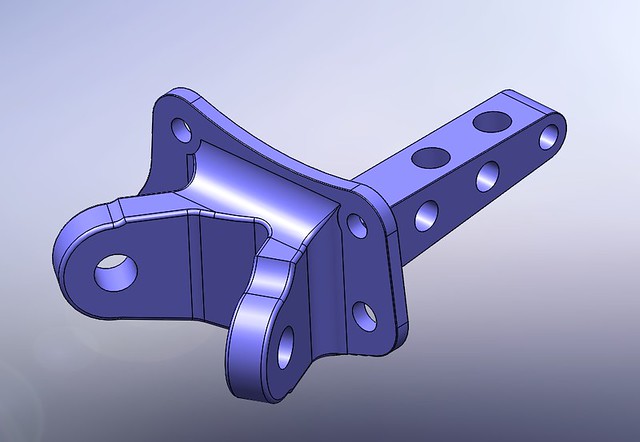
Plug End Joint Q-Light Alloy by Graeme Sutherland, on Flickr Library of Frame and Parts 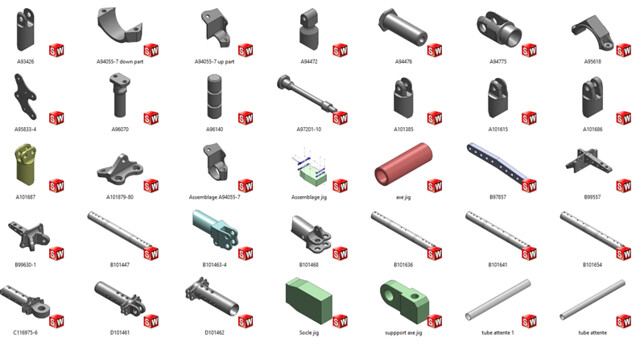
Library of Parts by Graeme Sutherland, on Flickr Outline Frame of the Cockpit 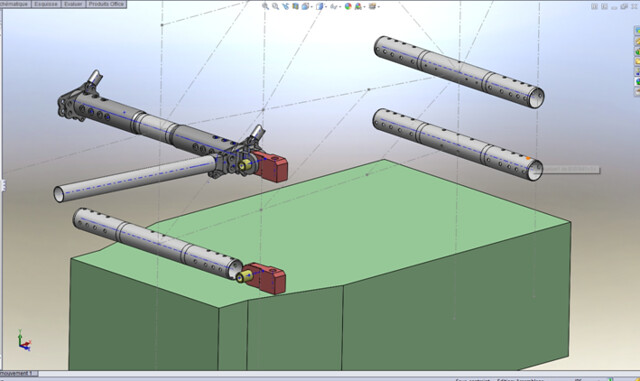
Cockpit Frame For Jig by Graeme Sutherland, on Flickr Lightweight Panel Bracket 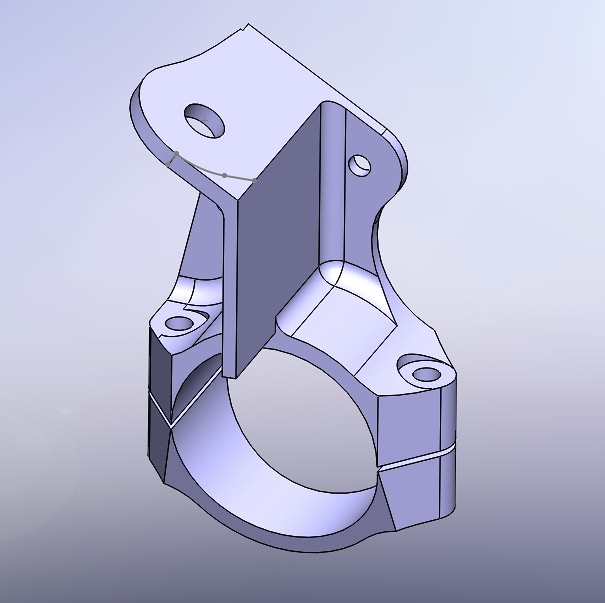
Panel Bracket Cast Light Alloy by Graeme Sutherland, on Flickr Steel Lug Joint B1 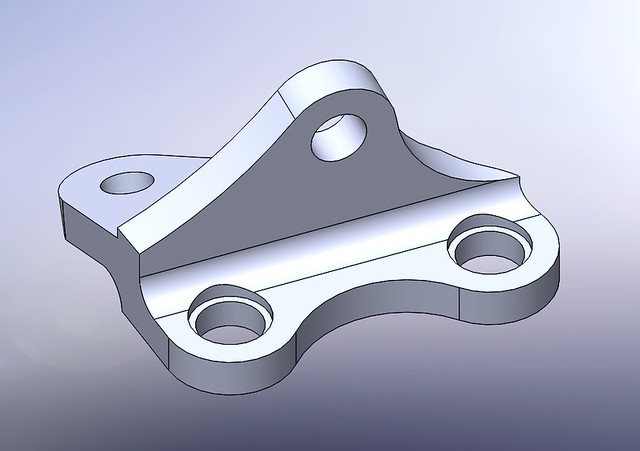
Steel Lug-Joint B1 by Graeme Sutherland, on Flickr Steel Plug Joint 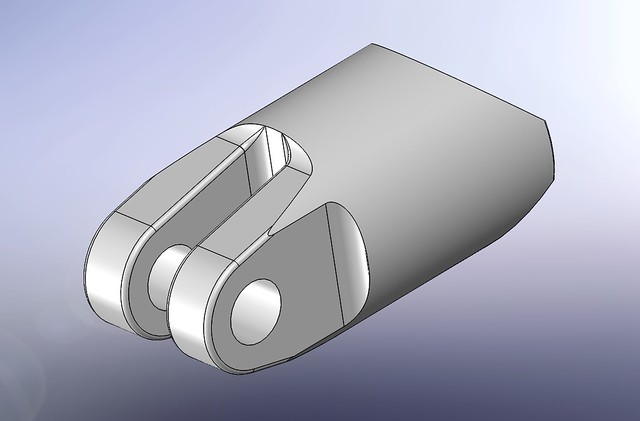
Steel Plug Cockpit to Spar by Graeme Sutherland, on Flickr Steel Plug End of Fuse to Cockpit 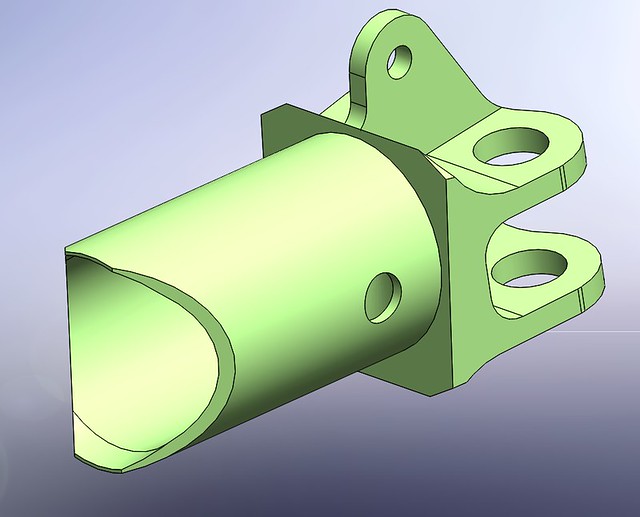
Steel Plug End-Fuselage by Graeme Sutherland, on Flickr Steel Plug End Monocoque (incomplete) 
Steel Plug end-Rear Monocoque by Graeme Sutherland, on Flickr But more recently in NZ, I was able to share the project on Photo Boards at the recent D-Day Open Day at Ardmore on Sunday June 5th (D-Day was June 6th 1944) I was very pleased to see the real interest by the aviation public and some who even knew of the project such as John Rummery, Replicore Radiators. We had an interesting chat. So thanks for those who approached and asked questions - some were very knowledgeable about the Napier Sabre engine even! I had a postcard setup by the local Impact Photographics shop and I was able to easily give 30 away!! NZ Project Promotion Postcard 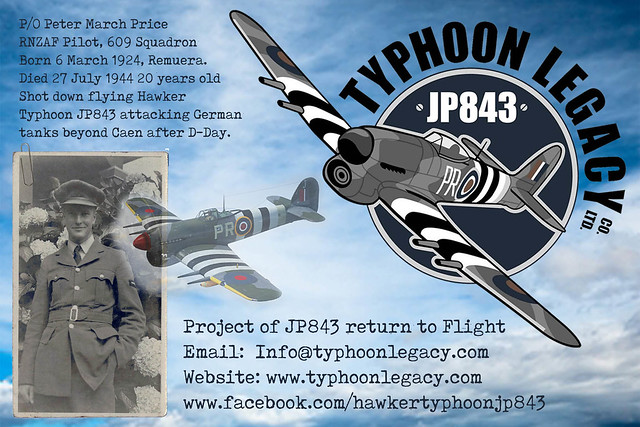
Project JP843 Postcard by Graeme Sutherland, on Flickr Project Photo Board 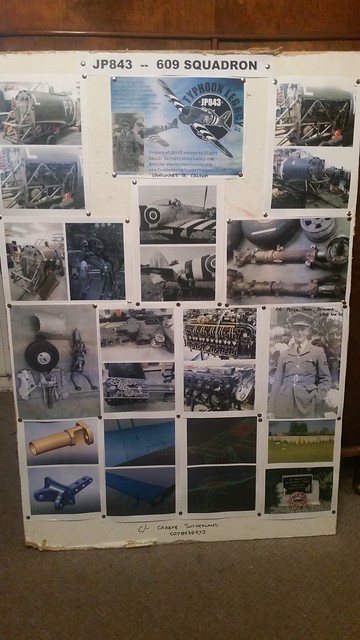
Project JP843 Photo Board by Graeme Sutherland, on Flickr Hawker Typhoon Photo Board 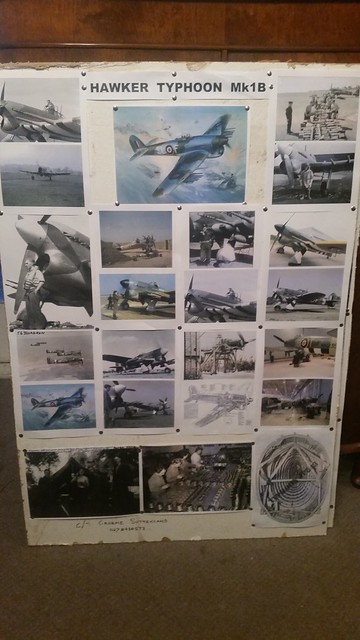
Hawker Typhoon Photo Board by Graeme Sutherland, on Flickr Photo Board Setup D-Day Open Day Ardmore Sunday 5th June 2016 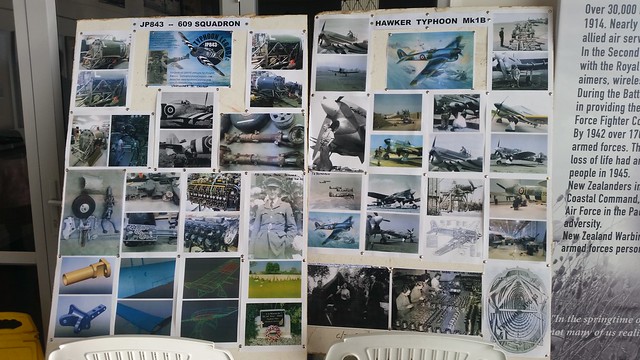
Both Photo Boards by Graeme Sutherland, on Flickr You can PM me for more details, the Website is listed below and on there is a link to our Facebook page. Please join us! Also there is another page for donations but there is a great story in there about the project, and Ian Slater's love for the hawker Typhoon, even selling a Cessna 150 to pay for 15,000 celluloid Hawker drawings!! About 3,000 of which, relate to the hawker Typhoon and the Napier Sabre engine. www.gofundme.com/hawkertyphoon  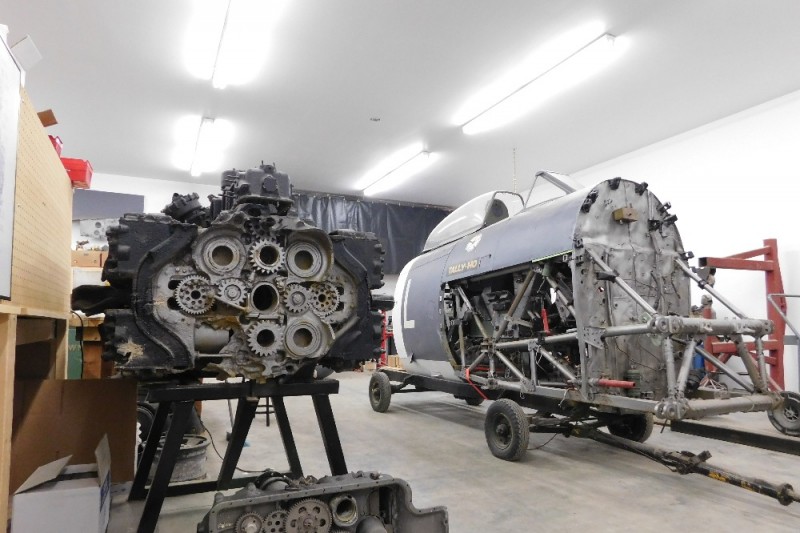 |
|
|
|
Post by kiwithrottlejockey on Jul 16, 2016 12:25:46 GMT 12
OUCH!! That looks like the sort of mechanical-gears nightmare found inside the front-end case of those Bristol sleeve-valve Perseus, Hercules & Centaurus radial engines. |
|
|
|
Post by suthg on Jul 16, 2016 12:47:09 GMT 12
It was a clever compact arrangement with two crankshafts to share the teeth load by splitting the drive reduction into two layshafts each (the four corners, cranks being centre top and bottom) and off a further reduction onto the sun gear on the prop shaft by four bevel gears - all sharing 1/4 of the power and forces. There were balance beams on the ends of these corner layshafts to equalise the end thrust and still be compact. The two horizontal centreline gears power the sleeve valve drives (worm and wheel) (and internally via a narrow shaft to the supercharger drive). To get the motion to them, there are two small offset gear wheels off the first reductions in the corners. These are like the camshafts in a traditional engine. This engine is a sea recovery unit and we are soon to soak it and in 6 mo ths time, attempt to split it - not to repair and run but for measurements and assembly techniques.  |
|
|
|
Post by kiwithrottlejockey on Jul 16, 2016 13:10:36 GMT 12
Napier appears to have had a liking for creating “complex” engines. Such as the Deltic diesel engines produced for locomotives in the UK with three crankshafts and six pistons (in horizontally-opposed pairs) in each triangular cylinder.  |
|
|
|
Post by suthg on Jul 16, 2016 13:16:09 GMT 12
They appeared complex but in general had less moving parts for same number of cylinders and had very good power to weight ratio and fuel economy - AND speaking of Halford's engines, - once teething problems were solved, had very long TBO - eg his other designs, the Cyrrus and Gipsy series of engines, not to mention Halford's two early jet engines the Goblin and the Ghost which reliably powered and continue today to power the Vampires and Venoms!! Yes by the end of war, the Napier Sabre had a very good TBO because there was much less ring and sleeve wear than traditional OHV engines.
|
|



